Instruction
What you can learn about the golf swing from an NFL quarterback’s throwing motion
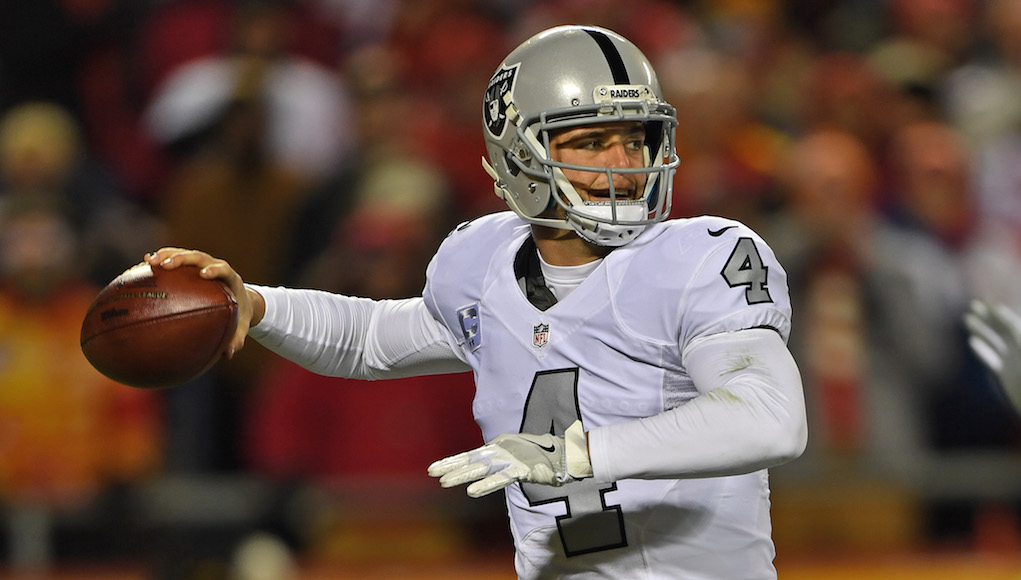
The more I have studied the golf swing throughout my coaching career, the more I have realized its similarities to a throwing motion… but not just any throwing motion. The movements necessary to properly swing a golf club are remarkably similar to the way an elite, efficient NFL quarterback throws a football.
Why a quarterback and not a baseball pitcher? Pitchers throw the same distance every time (60 feet, 6 inches) with a ball/strike percentage of just 62 percent. An NFL quarterback has to be more accurate and precise under different circumstances, making a variety of throws from different lengths. As for their accuracy? Often a quarterback’s 30-yard pass is into a windows the size of a receiver’s hands, and the difference of a few inches determines whether a pass was a huge success or complete failure.
I had the opportunity to sit down with one of the best in the business, Todd Downing, quarterback coach of the Oakland Raiders, to discuss the similarities.
“The longer the motion, the more margin for error,” says Todd Downing, quarterback coach of the Oakland Raiders.
When it comes to throwing mechanics, Downing works on limiting motion to develop speed, consistency and efficiency. He works on shortening the stroke of the throw to make it as efficient as possible. “The second an extra moving parts start to go, a big sweeping motion with the arm will occur, which is not necessary,” Downing says about a quarterback’s throwing motion.
In golf, when we limit excess movement, players will have a greater chance of a consistent and a more efficient strike, and more efficiency equals more speed and distance. If you look at any sport, great athletes seem to do more with less. For example, a quarterback’s effortless throwing motion producing a 60-yard throw; a simple golf swing producing a 300-yard drive; or the smooth home-run swing of Ken Griffey Jr.
The similarities between the two motions — a quarterback’s throwing motion and a PGA Tour player’s golf swing — as well as how they are taught is striking. In both sports, the target is in front of you and both motions should be trained to produce forward inertia, with the body moving toward the target. As it turns out, there are also several misconceptions about the two motions.
The Setup
In both golf and the quarterback position, getting into the proper setup is key to making an efficient motion. The better position we start in, the better chance we have to succeed. In both sports, we have 100 percent control of our posture, so both should be practiced, maintained, and put us in a position to make the most effortless, efficient stroke possible.
In golf, when a golfer sets up with incorrect body angles at address, then he or she will have to “find” the correct impact position on the downswing, requiring more motion and timing to be successful. That results in inconsistent shots.
“It starts with the setup,” Downing says.
When a quarterback is not in the correct posture when he throws, for example, or had to throw with his body in the incorrect position with bad balance, the chances of accuracy are diminished. The quarterback has to try and find his correct throwing shape or posture. If both a golfer and a quarterback start correctly, the chances of accuracy are increased.
The Coil and Throwing Position
This position has by far the most similarities, as well as misconceptions. In the golf swing, the backswing is a coil, which should have a golfer’s body move the proper direction and amount. This allows golfers to swing down and through in the most efficient way possible: going toward the target.
Note that I used the word coil and not the word turn. This is a common misconception; I’ve found that golfers who think about turn tend to get what I call “over-rotated” and/or turned in the wrong direction, which causes a lack of power.
If you correctly fold up your right arm in the backswing with the correct sequence, you can allow your glutes to load and body to be pulled into the proper coil position. Attempting to consciously create a bigger shoulder and/or torso rotation is not required and is a false sense of power. Over-rotating or consciously trying to turn your upper body from the start can result in your body tilting toward the target and downwards, as shown below, which is incorrect.
“Why would you twist [your torso] when you want to drive forward?” Downing says.
This goes back to the false sense of power previously mentioned. in both athletic moves, a big rotation away from the target is not required.
Below is a great drill to feel the proper coil. Get into your correct golf posture with just your right arm holding the club. Fold up your right arm, and then grip the club with your left hand. As your left arm moves around to grab the club, allow your right glute to move back and the left side of your body to move out. If this changes your backswing position, it will be for the better. You’ll notice how much more powerful the new position is as you swing the club into impact.
The same is true with NFL quarterbacks, Downing says. The quarterbacks that struggle are “the ones that feel like they need that long, throwing motion to develop speed.” Downing works to tighten loose throwing motions, making them more efficient and resulting in more speed.
The Finish Position
Downing teaches what’s called the “flamingo finish” for his quarterbacks, which can be translated to golf and is a great drill for many golfers. A flamingo finish is one where a quarterback can lift his trail foot completely off the ground as the right shoulder is over the lead foot. This drill is especially great for golfers that hang back with their upper body in the swing.
Below is a picture of the NFL Raiders quarterback Derek Carr in the “flamingo pose.”
How do we use this for our golf swing? Getting your right shoulder over your left foot (for a right-handed golfer) in the finish position is a great way to make sure your right side has rotated around through the shot. “Standing tall” in the finish is a product of your upper and lower body working properly through impact.
As a drill, hold your finish and make sure you can lift your right foot off the ground. This is an indication that your weight has moved forward through the shot.
Lastly, a point about work ethic. Downing usually starts his day at 5:15 a.m. and leaves at 9 p.m. The quarterbacks he works with tend to share the same work ethic. The desire to constantly improve is a requirement for both a player, and a coach, to reach the peak of your sport.
Instruction
The Wedge Guy: Beating the yips into submission

There may be no more painful affliction in golf than the “yips” – those uncontrollable and maddening little nervous twitches that prevent you from making a decent stroke on short putts. If you’ve never had them, consider yourself very fortunate (or possibly just very young). But I can assure you that when your most treacherous and feared golf shot is not the 195 yard approach over water with a quartering headwind…not the extra tight fairway with water left and sand right…not the soft bunker shot to a downhill pin with water on the other side…No, when your most feared shot is the remaining 2- 4-foot putt after hitting a great approach, recovery or lag putt, it makes the game almost painful.
And I’ve been fighting the yips (again) for a while now. It’s a recurring nightmare that has haunted me most of my adult life. I even had the yips when I was in my 20s, but I’ve beat them into submission off and on most of my adult life. But just recently, that nasty virus came to life once again. My lag putting has been very good, but when I get over one of those “you should make this” length putts, the entire nervous system seems to go haywire. I make great practice strokes, and then the most pitiful short-stroke or jab at the ball you can imagine. Sheesh.
But I’m a traditionalist, and do not look toward the long putter, belly putter, cross-hand, claw or other variation as the solution. My approach is to beat those damn yips into submission some other way. Here’s what I’m doing that is working pretty well, and I offer it to all of you who might have a similar affliction on the greens.
When you are over a short putt, forget the practice strokes…you want your natural eye-hand coordination to be unhindered by mechanics. Address your putt and take a good look at the hole, and back to the putter to ensure good alignment. Lighten your right hand grip on the putter and make sure that only the fingertips are in contact with the grip, to prevent you from getting to tight.
Then, take a long, long look at the hole to fill your entire mind and senses with the target. When you bring your head/eyes back to the ball, try to make a smooth, immediate move right into your backstroke — not even a second pause — and then let your hands and putter track right back together right back to where you were looking — the HOLE! Seeing the putter make contact with the ball, preferably even the forward edge of the ball – the side near the hole.
For me, this is working, but I am asking all of you to chime in with your own “home remedies” for the most aggravating and senseless of all golf maladies. It never hurts to have more to fall back on!
Instruction
Looking for a good golf instructor? Use this checklist

Over the last couple of decades, golf has become much more science-based. We measure swing speed, smash factor, angle of attack, strokes gained, and many other metrics that can really help golfers improve. But I often wonder if the advancement of golf’s “hard” sciences comes at the expense of the “soft” sciences.
Take, for example, golf instruction. Good golf instruction requires understanding swing mechanics and ball flight. But let’s take that as a given for PGA instructors. The other factors that make an instructor effective can be evaluated by social science, rather than launch monitors.
If you are a recreational golfer looking for a golf instructor, here are my top three points to consider.
1. Cultural mindset
What is “cultural mindset? To social scientists, it means whether a culture of genius or a culture of learning exists. In a golf instruction context, that may mean whether the teacher communicates a message that golf ability is something innate (you either have it or you don’t), or whether golf ability is something that can be learned. You want the latter!
It may sound obvious to suggest that you find a golf instructor who thinks you can improve, but my research suggests that it isn’t a given. In a large sample study of golf instructors, I found that when it came to recreational golfers, there was a wide range of belief systems. Some instructors strongly believed recreational golfers could improve through lessons. while others strongly believed they could not. And those beliefs manifested in the instructor’s feedback given to a student and the culture created for players.
2. Coping and self-modeling can beat role-modeling
Swing analysis technology is often preloaded with swings of PGA and LPGA Tour players. The swings of elite players are intended to be used for comparative purposes with golfers taking lessons. What social science tells us is that for novice and non-expert golfers, comparing swings to tour professionals can have the opposite effect of that intended. If you fit into the novice or non-expert category of golfer, you will learn more and be more motivated to change if you see yourself making a ‘better’ swing (self-modeling) or seeing your swing compared to a similar other (a coping model). Stay away from instructors who want to compare your swing with that of a tour player.
3. Learning theory basics
It is not a sexy selling point, but learning is a process, and that process is incremental – particularly for recreational adult players. Social science helps us understand this element of golf instruction. A good instructor will take learning slowly. He or she will give you just about enough information that challenges you, but is still manageable. The artful instructor will take time to decide what that one or two learning points are before jumping in to make full-scale swing changes. If the instructor moves too fast, you will probably leave the lesson with an arm’s length of swing thoughts and not really know which to focus on.
As an instructor, I develop a priority list of changes I want to make in a player’s technique. We then patiently and gradually work through that list. Beware of instructors who give you more than you can chew.
So if you are in the market for golf instruction, I encourage you to look beyond the X’s and O’s to find the right match!
Instruction
What Lottie Woad’s stunning debut win teaches every golfer

Most pros take months, even years, to win their first tournament. Lottie Woad needed exactly four days.
The 21-year-old from Surrey shot 21-under 267 at Dundonald Links to win the ISPS Handa Women’s Scottish Open by three shots — in her very first event as a professional. She’s only the third player in LPGA history to accomplish this feat, joining Rose Zhang (2023) and Beverly Hanson (1951).
But here’s what caught my attention as a coach: Woad didn’t win through miraculous putting or bombing 300-yard drives. She won through relentless precision and unshakeable composure. After watching her performance unfold, I’m convinced every golfer — from weekend warriors to scratch players — can steal pages from her playbook.
Precision Beats Power (And It’s Not Even Close)
Forget the driving contests. Woad proved that finding greens matters more than finding distance.
What Woad did:
• Hit it straight, hit it solid, give yourself chances
• Aimed for the fat parts of greens instead of chasing pins
• Let her putting do the talking after hitting safe targets
• As she said, “Everyone was chasing me today, and managed to maintain the lead and played really nicely down the stretch and hit a lot of good shots”
Why most golfers mess this up:
• They see a pin tucked behind a bunker and grab one more club to “go right at it”
• Distance becomes more important than accuracy
• They try to be heroic instead of smart
ACTION ITEM: For your next 10 rounds, aim for the center of every green regardless of pin position. Track your greens in regulation and watch your scores drop before your swing changes.
The Putter That Stayed Cool Under Fire
Woad started the final round two shots clear and immediately applied pressure with birdies at the 2nd and 3rd holes. When South Korea’s Hyo Joo Kim mounted a charge and reached 20-under with a birdie at the 14th, Woad didn’t panic.
How she responded to pressure:
• Fired back with consecutive birdies at the 13th and 14th
• Watched Kim stumble with back-to-back bogeys
• Capped it with her fifth birdie of the day at the par-5 18th
• Stayed patient when others pressed, pressed when others cracked
What amateurs do wrong:
• Get conservative when they should be aggressive
• Try to force magic when steady play would win
• Panic when someone else makes a move
ACTION ITEM: Practice your 3-6 foot putts for 15 minutes after every range session. Woad’s putting wasn’t spectacular—it was reliable. Make the putts you should make.
Course Management 101: Play Your Game, Not the Course’s Game
Woad admitted she couldn’t see many scoreboards during the final round, but it didn’t matter. She stuck to her game plan regardless of what others were doing.
Her mental approach:
• Focused on her process, not the competition
• Drew on past pressure situations (Augusta National Women’s Amateur win)
• As she said, “That was the biggest tournament I played in at the time and was kind of my big win. So definitely felt the pressure of it more there, and I felt like all those experiences helped me with this”
Her physical execution:
• 270-yard drives (nothing flashy)
• Methodical iron play
• Steady putting
• Everything effective, nothing spectacular
ACTION ITEM: Create a yardage book for your home course. Know your distances to every pin, every hazard, every landing area. Stick to your plan no matter what your playing partners are doing.
Mental Toughness Isn’t Born, It’s Built
The most impressive part of Woad’s win? She genuinely didn’t expect it: “I definitely wasn’t expecting to win my first event as a pro, but I knew I was playing well, and I was hoping to contend.”
Her winning mindset:
• Didn’t put winning pressure on herself
• Focused on playing well and contending
• Made winning a byproduct of a good process
• Built confidence through recent experiences:
- Won the Women’s Irish Open as an amateur
- Missed a playoff by one shot at the Evian Championship
- Each experience prepared her for the next
What this means for you:
• Stop trying to shoot career rounds every time you tee up
• Focus on executing your pre-shot routine
• Commit to every shot
• Stay present in the moment
ACTION ITEM: Before each round, set process goals instead of score goals. Example: “I will take three practice swings before every shot” or “I will pick a specific target for every shot.” Let your score be the result, not the focus.
The Real Lesson
Woad collected $300,000 for her first professional victory, but the real prize was proving that fundamentals still work at golf’s highest level. She didn’t reinvent the game — she simply executed the basics better than everyone else that week.
The fundamentals that won:
• Hit more fairways
• Find more greens
• Make the putts you should make
• Stay patient under pressure
That’s something every golfer can do, regardless of handicap. Lottie Woad just showed us it’s still the winning formula.
FINAL ACTION ITEM: Pick one of the four action items above and commit to it for the next month. Master one fundamental before moving to the next. That’s how champions are built.
PGA Professional Brendon Elliott is an award-winning coach and golf writer. You can check out his writing work and learn more about him by visiting BEAGOLFER.golf and OneMoreRollGolf.com. Also, check out “The Starter” on RG.org each Monday.
Editor’s note: Brendon shares his nearly 30 years of experience in the game with GolfWRX readers through his ongoing tip series. He looks forward to providing valuable insights and advice to help golfers improve their game. Stay tuned for more Tips!








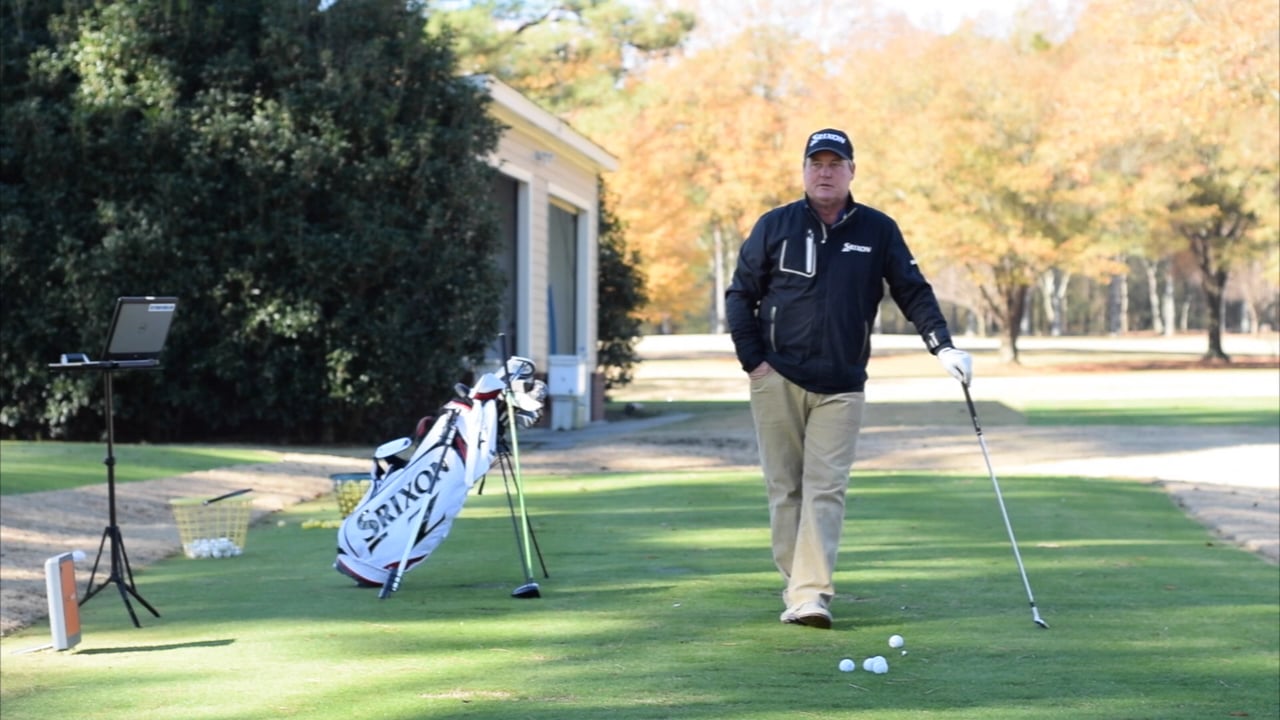
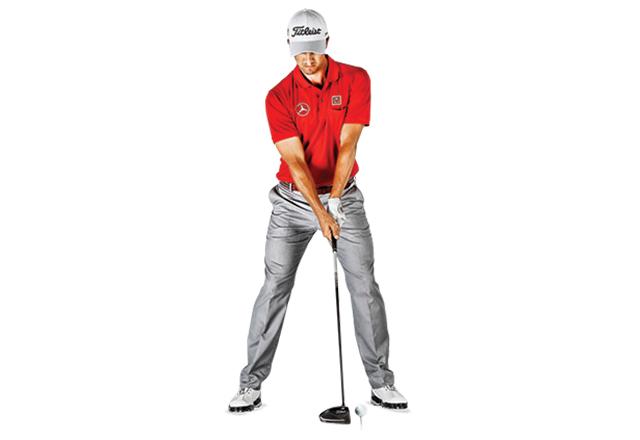
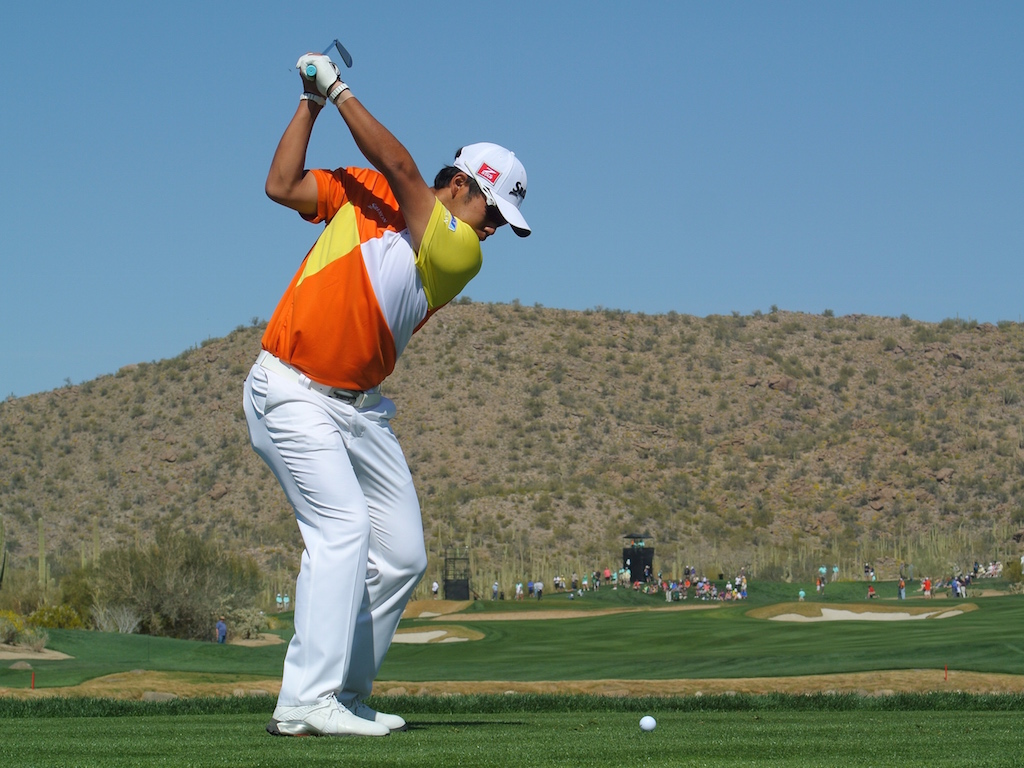

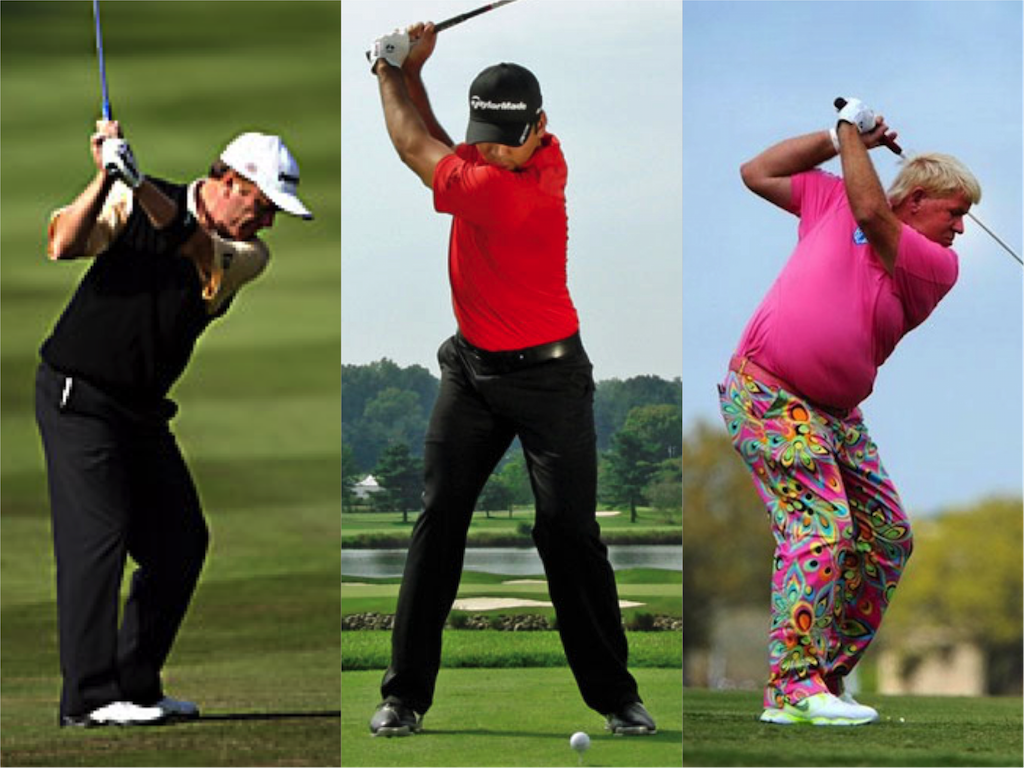








Jeffrey Purtell
Dec 29, 2016 at 11:52 pm
I just laid some bricks down to repair my shed roof. The golf lesson I got was amazing. My handicap is going to plummet.
knoofah
Dec 29, 2016 at 3:24 pm
The best piece of advice in this article is the last paragraph, but I like what the author is saying.
Joe Brennan
Dec 28, 2016 at 1:55 am
Definitely helped my swing
MuskieCy
Dec 27, 2016 at 12:46 am
All quarterbacks would be better with hyper-precise change ups.
Sometimes, actually most times, with 300lbs bullets flying around a fastball all is all you have.
Alex
Dec 26, 2016 at 1:58 pm
Definitely one of the best articles I’ve read in awhile!
Double Mocha Man
Dec 26, 2016 at 1:07 pm
The Raiders are a playoff team this year. Though I don’t know if I’d be willing to break a leg to have a better golf swing.
Christosterone
Dec 26, 2016 at 12:03 pm
Awesome article…
Only problem was putting a Raider as ur archetypal QB…
I didn’t know they still had were an NFL team…though they moved to England or Canada…
????
Jk…great article A++++
-Chris
Dennis Jones
Dec 26, 2016 at 11:41 am
While I’m sure your article has some merit, the initial theory of a baseball pitcher not being as accurate as a quarterback is flawed. A pitcher isn’t trying to throw the ball over the center of the strike zone, if he did, it would result in a homerun almost every time. A quarterback isn’t trying to throw a screwball, change up, curve or slider. Each is different is their own way but don’t to confuse people with your misguided summation.
Double Mocha Man
Dec 26, 2016 at 2:36 pm
I’ve seen some QB’s throw screwballs and knuckleballs. And oftentimes they are required to throw a change-up.
Calheel
Dec 27, 2016 at 3:51 pm
Noticed Tebow at the QB position did you?
Double Mocha Man
Dec 27, 2016 at 10:24 pm
Except, now Tebow is trying to hit screwballs, knuckleballs and change-ups…